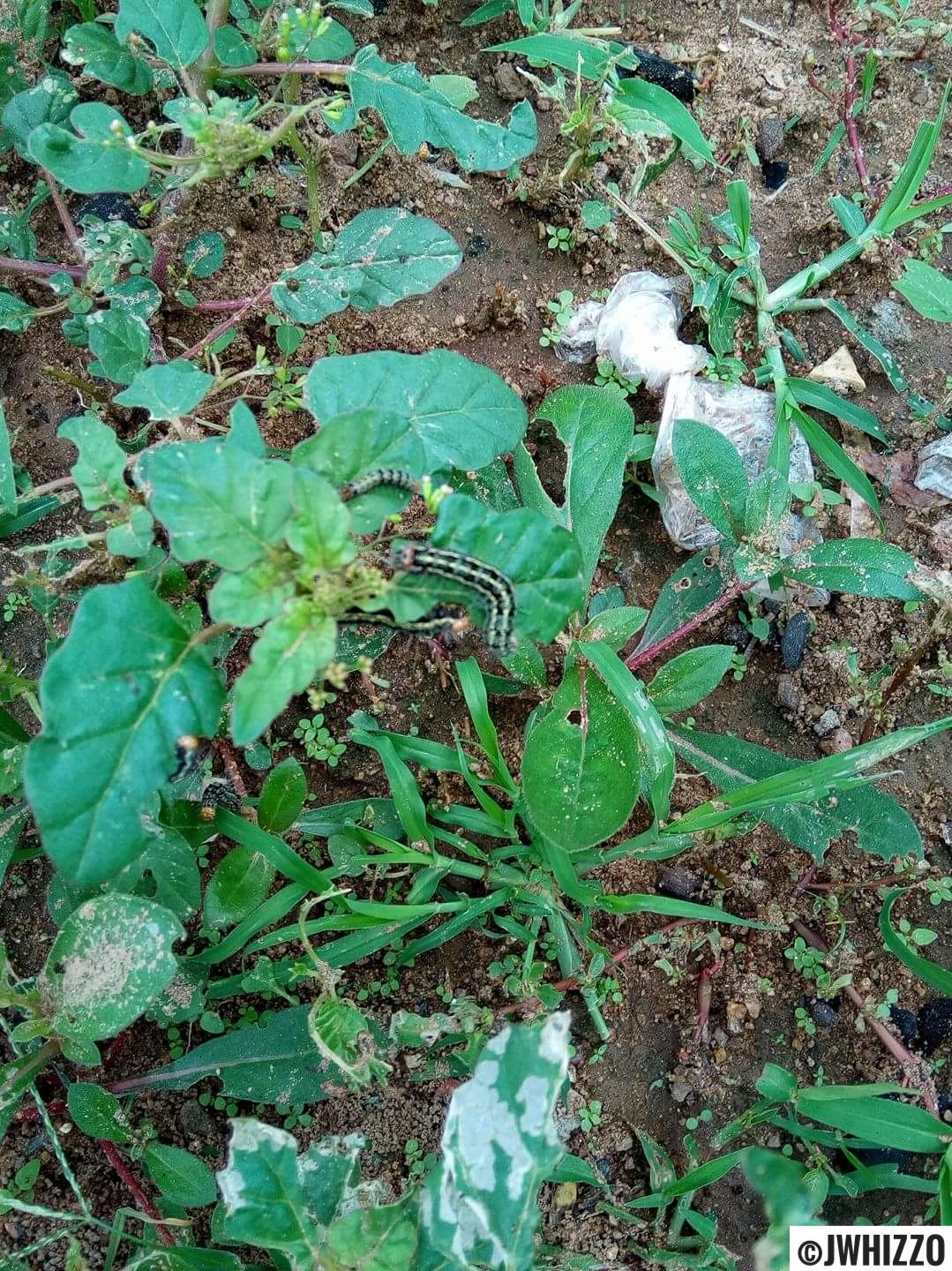The insect larvae shown on the photo is Cirina forda busy devouring an unnamed plant leaves at my backyard, Ogbomoso, Oyo state, Nigeria.
(You can see different leaves that have been wholly or partly eaten by the larvae and they are many in the surrounding but my camera can only capture those above, different big and beautiful ones are under the leaves).
It's also known as "moni-moni" in Yoruba land, "aku" in Ibo , and "chinge" in Hausa.
Before, I didn't know its significances and scientific name until Ajadi Ayodeji and I wrote a part of the project work report on the feeding trials of Cirina forda larvae on two host plants; Vitellaria paradoxa (Shea butter tree) and Anacardium occidentale (cashew tree) sometimes ago.
and I wrote a part of the project work report on the feeding trials of Cirina forda larvae on two host plants; Vitellaria paradoxa (Shea butter tree) and Anacardium occidentale (cashew tree) sometimes ago.
Cirina forda (Westwood, 1849) is commonly known as the Pallid emperor moth or Shea defoliator. It is a pest of sheabutter tree Vittelaria paradoxa (Sapotaceae) in Nigeria and is indigenous to southern, east, west and central Africa. Its larvae resemble silk worm caterpillars except that they do not spin cocoons (Osasona and Olaofe, 2010).
The larvae of this insect are good source of protein for human and livestock consumption and income (Fasoranti and Ajiboye, 1993).
As is typical of virtually all Lepidoptera, the older instar larvae are the most destructive, causing extensive damage to the leaves of the tree, thereby reducing the photosynthetic capacity and fruit production (Dwomoh et al, 2010) but control at this stage is not advised because it provides incidental source of food to locals.
Many Workers (local and international) have carried out many researches in it as a source of food and as a pest to economic trees.
In conclusion, it is a source of proteins (food) and at the same time a serious pest of shea butter tree. The larvae are heat-dried and very very delicious.
BTW, they are always available during rainy season.